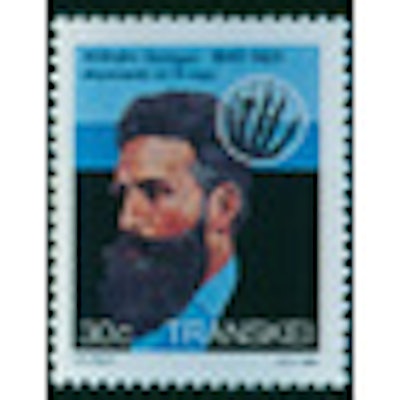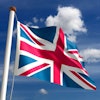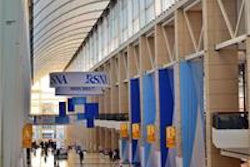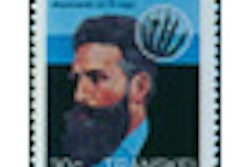
When RSNA held its first meeting in December 1915, the conference attracted 30 of the nascent society's 62 members to a Chicago hotel. Now closing in on its 100-year anniversary, RSNA still meets in Chicago, but it draws 60,000 radiology professionals to what has become the world's largest medical meeting.
Nowadays, meeting registrants camp in dozens of hotels, dine in hundreds of restaurants, and ride buses from McCormick Place to the center of the city. The RSNA conference now draws radiologists from countries in every continent, except Antarctica.
Roots in Chicago
One of the early justifications behind the formation of the RSNA organization, as opposed to the American Roentgen Ray Society, was to have meetings in the middle of the U.S. for the convenience of Midwestern radiologists. So most early meetings were in Chicago, with some in St. Louis, Detroit, Kansas City, Cleveland, Milwaukee, Cincinnati, and even New Orleans.
Shortly after its first session, RSNA began to offer and charge for exhibit space to companies peddling x-ray equipment. As the years passed, some of the companies also hosted meals and receptions. Later on, other radiology societies latched on to the RSNA session for their committee meetings and occasional receptions.
In some years, RSNA leaders and meeting committee members (and often their wives) would arrive at the convention hotel a few days early to package programs, sort registration, direct the member exhibits, and supervise the commercial exhibit installments. When the show was held in the Palmer House in Chicago and hotels in other cities, rooms on several floors would be emptied and filled with dozens of scientific and/or commercial exhibits.
The Chicago Palmer House was the most frequent meeting site. The managers of the hotel had been willing to expand some of the meeting areas and to clear space on the third floor for the placement of commercial exhibits. However, that space was not large enough and tall enough to satisfy many new exhibitors.
But for most RSNA conventions in the early days, the exhibit areas were swarmed, along with the two large meeting rooms. By 1962, there were 102 technical exhibits, 62 scientific exhibits, and 61 refresher courses. The charge for small 8 x 10-ft commercial exhibits was $350, and it was far more for larger ones.
In the same year, the American Association of Physicists in Medicine was allowed to sponsor sessions for its own members. The exhibits and some of the sessions were also at times open to x-ray technologists who either lived in the Chicago area or made their accommodations in other hotels.
At the same time, many of the radiologists chose to stay in other hotels, and the wives of many of them were granted charge accounts at Marshall Field's and other major Chicago department stores. Even the hotel had spaces for stores with jewelry, clothes, and shoes, along with several restaurants.
International growth
RSNA membership totaled 4,159 radiologists by 1963, and RSNA was by then reputed to be the largest radiology organization in the world. A few radiologists from South America and Europe and even Asia began to attend the RSNA convention. Some of the commercial exhibitors would bring foreign radiologists with them to show new equipment, with the hope of some signed orders.
In the 1960s, RSNA had the advantage of the American College of Radiology's public relations managers operating a press room for newspaper science reporters, television and radio correspondents, and medical magazine writers. Also in those years, many radiologists were avid smokers, and meeting rooms, exhibit areas, and even reception spots were full of tobacco smoke.
However, in the 1960s, with RSNA spending all of its years in the Palmer House, its leaders began to become concerned about outgrowing the venue, and the Chicago fire department inspectors warned about the convention space being "too crowded and too full of smoke." The Hilton organization also had another larger Chicago hotel, which it proposed as one of two locations for the growing RSNA meetings, as well as some other annual meetings routinely held late in November in Chicago.
That was the decade that the city of Chicago authorized the construction of a meeting exhibit center, McCormick Place, along the Lake Michigan area south of downtown Chicago. That building suffered a serious fire in 1967, shortly after it was opened, but the city government provided for reconstruction and some expansion.
Some RSNA leaders began to consider moving the meeting to McCormick Place, but others expressed concern about a location several miles from all of the hotels and restaurants in the middle of the city. By 1973, the RSNA meeting contained 10,800 registrants jamming themselves into the Palmer House.
RSNA contacted the American Hospital Association (AHA), which had meeting experience, and engaged George Schuyler, who had been an AHA meeting planner. The 1975 meeting was the first venture to McCormick Place, and buses were chartered to take people from hotels to the meeting place. The registration in 1975 was 12,192, including 4,473 commercial exhibitors. The city announced plans to build a hotel next to McCormick Place and to add subsequent buildings for more meeting areas.
Also in the early 1970s, the RSNA board decided that not all meetings should be held in Chicago, and it made arrangements for annual meetings in Atlanta and Dallas. In 1979, several months prior to the RSNA show, a member of another medical meeting was killed on an Atlanta street by a robber. The RSNA demanded that the city of Atlanta provide meeting protection, which was done effectively.
The next year, in Dallas, the provisions and transportation between hotels and the meeting auditorium were ineffective. One busload of meeting registrants was reported to have been misled to the nearby city of Fort Worth, 30 miles away. So RSNA decided to go back to Chicago and forfeit Atlanta and Dallas.
Due to another commitment, the 1984 meeting was held in Washington, DC, instead of Chicago. That venue was too small for RSNA attendees and exhibitors, and RSNA had to limit participants, also with a bus service from hotels.
By those years, RSNA was keen on getting help in Chicago. Mayor Richard M. Daley made efforts to accommodate the continuing growth of the conference, shortly filling two and then three large buildings at McCormick Place, along with another hotel. RSNA was so grateful that it awarded Mayor Daley an honorary membership.
By 1990, RSNA was said to be the largest medical meeting in the world. The flow of foreign radiologists and vendors continued to increase. The total registration climbed toward 50,000 attendees. The exhibits occupied 305,000 sq ft in McCormick Place, with some 400 rooms assigned for scientific presentations and smaller meetings. The agenda included 1,422 scientific papers.
Two decades later, RSNA continues to hold its meetings in Chicago at the end of November. Some years, the meetings have exceeded 60,000 attendees, including many foreign participants. Despite Chicago's cold climate, no snow storms have ever defeated the traffic. And McCormick Place has since added another major building.
The RSNA conference remains the largest and busiest medical meeting, and it will probably stay in Chicago for the foreseeable future.
Otha W. Linton, MSJ, retired in 1997 as the associate executive director of the American College of Radiology (ACR) after 35 years. He also served as executive director of Radiology Centennial in 1995. Mr. Linton holds a bachelor's degree in journalism from the University of Missouri and a Master of Science in journalism from the University of Wisconsin. His work has been published widely in the U.S. and abroad, and he is a regular contributor to several journals including Academic Radiology, the American Journal of Roentgenology, Radiology, and the Journal of the American College of Radiology. He joined the ACR staff in 1961 and had a key role in its growth. Over the years, his responsibilities with the ACR included government affairs, public relations, marketing, publishing, industrial liaison, and international relations. Just before his ACR retirement, he became the executive director of the International Society of Radiology and served in that role until earlier this year. Also, since his retirement, he has written and published 14 histories of radiology societies and academic centers.



















